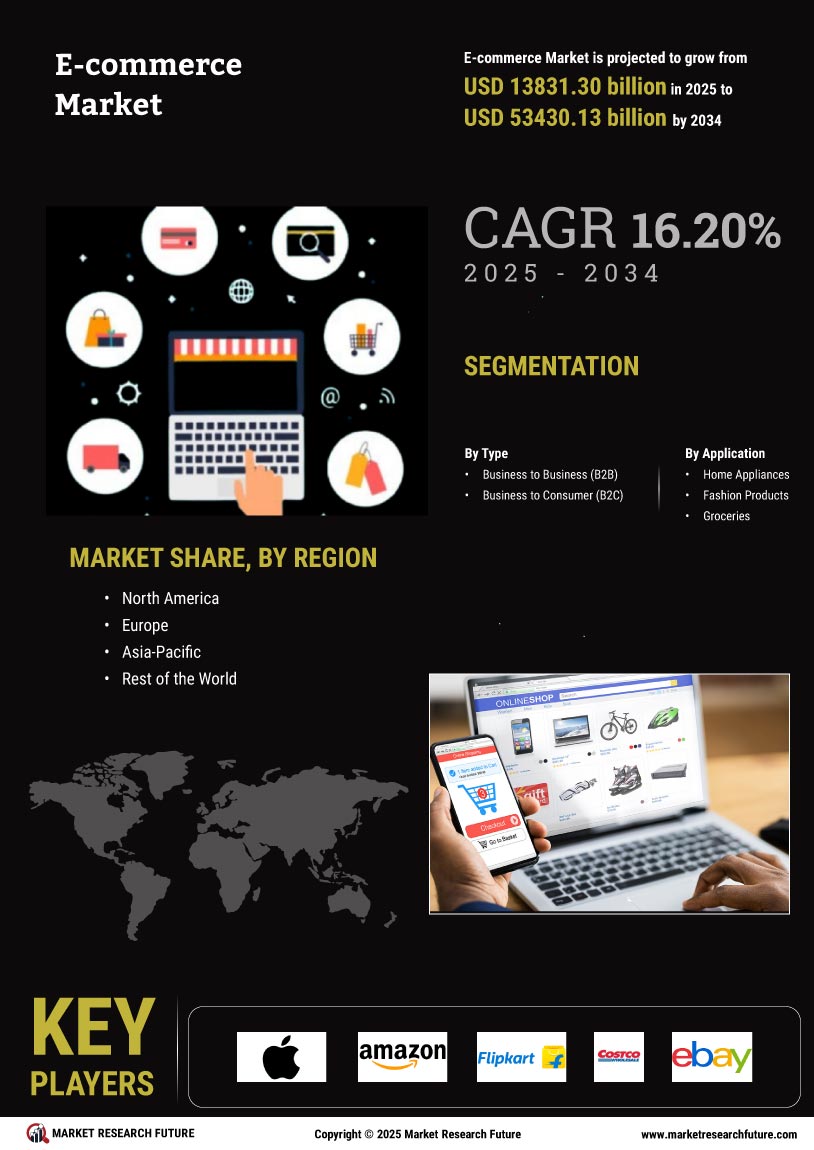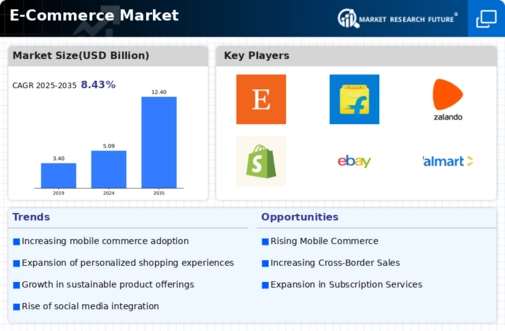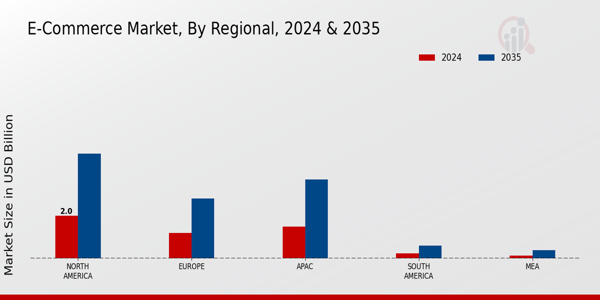Growing Mobile Commerce
Mobile commerce, or m-commerce, is a pivotal driver in the Global E-Commerce Market Industry. With the increasing use of smartphones and tablets, consumers are increasingly turning to mobile devices for shopping. In 2024, mobile commerce is expected to account for a significant share of the total e-commerce sales, reflecting a shift in consumer behavior towards convenience and accessibility. Retailers are optimizing their websites for mobile use, enhancing user experience and engagement. This trend is likely to persist, with projections indicating that by 2035, the Global E-Commerce Market Industry could reach 12.4 billion USD, driven in part by the growth of mobile commerce.
Market Growth Projections
The Global E-Commerce Market Industry is poised for remarkable growth, with projections indicating a market size of 5.09 billion USD in 2024. This growth trajectory suggests a robust future, with expectations of reaching 12.4 billion USD by 2035. The compound annual growth rate of 8.43% from 2025 to 2035 highlights the increasing consumer reliance on online shopping platforms. Factors such as technological advancements, changing consumer behaviors, and the expansion of digital payment solutions are likely to contribute to this growth. As the industry evolves, it is essential to monitor these trends to understand the dynamics shaping the Global E-Commerce Market Industry.
Rising Internet Penetration
The Global E-Commerce Market Industry experiences substantial growth due to increasing internet penetration worldwide. As of 2024, approximately 5.09 billion people are projected to be online, representing a significant portion of the global population. This connectivity facilitates access to e-commerce platforms, enabling consumers to shop from anywhere at any time. Countries with emerging economies are witnessing rapid internet adoption, which further fuels the market. The ease of online transactions and the proliferation of mobile devices contribute to this trend, suggesting that the Global E-Commerce Market Industry will continue to expand as more individuals gain internet access.
Global Supply Chain Innovations
Innovations in the global supply chain are transforming the Global E-Commerce Market Industry. Efficient logistics and distribution networks are essential for timely delivery and customer satisfaction. Companies are increasingly adopting technologies such as automation, artificial intelligence, and data analytics to streamline operations. These advancements enable faster shipping times and reduced costs, which are critical in a competitive market. As the industry adapts to changing consumer expectations, the focus on supply chain efficiency is likely to enhance overall market growth. This trend aligns with the anticipated increase in market size, potentially reaching 12.4 billion USD by 2035.
Expansion of Online Payment Solutions
The Global E-Commerce Market Industry is significantly influenced by the expansion of online payment solutions. As consumers increasingly prefer digital transactions, the availability of secure and diverse payment options enhances their shopping experience. Payment gateways and digital wallets are becoming more prevalent, allowing for seamless transactions. In 2024, the market is expected to see a rise in the adoption of contactless payments and cryptocurrencies, reflecting changing consumer preferences. This trend may contribute to the projected compound annual growth rate of 8.43% from 2025 to 2035, indicating a robust future for the Global E-Commerce Market Industry.
Increased Focus on Customer Experience
The Global E-Commerce Market Industry is witnessing a heightened emphasis on customer experience as a key driver of growth. Retailers are investing in personalized shopping experiences, utilizing data analytics to understand consumer preferences better. Enhanced customer service, easy return policies, and user-friendly interfaces are becoming standard practices. This focus on customer satisfaction is likely to foster brand loyalty and repeat purchases, which are essential for sustained growth. As the market evolves, companies that prioritize customer experience may gain a competitive edge, further propelling the Global E-Commerce Market Industry towards its projected growth trajectory.















